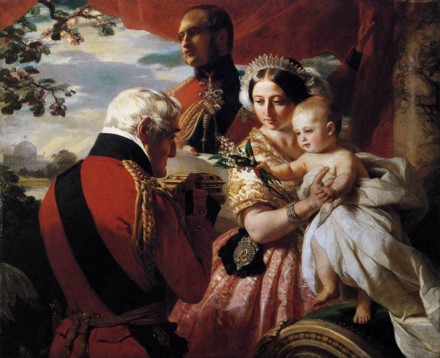Monarchy
About Andrew Cusack
 Writer, web designer, etc.; born in New York; educated in Argentina, Scotland, and South Africa; now based in London.
Writer, web designer, etc.; born in New York; educated in Argentina, Scotland, and South Africa; now based in London. read more
News
Blogs
Reviews & Periodicals
Arts & Design
World
France
Mitteleuropa
Knickerbockers
Argentina
The Levant
Africa
Cape of Good Hope
Netherlands
Scandinavia
Québec
India
Muscovy
Germany
Academica
Monarchs and Presidents in Islam
National Review, Nov 21, 1986
by Erik von Kuehnelt-Leddihn
IN THE Islamic world’s relations with Israel, the hard-liners are the various Arab and non-Arab republics. When there is any sign of softness, it comes, almost always, from one of the monarchies. (Egypt, and Egypt alone, is the exception.) It thus did not come as a great surprise that King Hassan II of Morocco agreed to meet with the then Israeli prime minister, Shimon Peres, this summer.
While individual monarchs historically may have been capricious or cruel, monarch as an institution is inclined to be generous: Montesquieu has told us that while the driving element in republics is virtue, in monarchies it is clemency. And, indeed, the Islamic monarchs of old were infinitely more tolerant than their modern republican successors. They traveled extensively, and many had a cosmopolitan outlook. Some had relatives abroad. When King Hassan II of morocco writes to members of Europe’s royal families, he addresses them as “cher cousin” or “chere cousine,” since he is a descendant of Mohammed’s daughter Fatima, as by now are all the Christian royal families. (Many centuries ago, a Moroccan prince was taken prisoner by the Castilians and converted in captivity. After his release he married into a princely family, and over the centuries his bloodline has spread into countless aristocratic and royal families.) In chooing their administrators, officers, diplomats, bankers, and doctors, Islam’s monarchs looked for able men regardless of religion, never caring whether their choices were popular or not.
It is true that local slaughters of Christians took place in various parts of the Turkish Empire, but things got really bad only when the enlightened, highly nationalistic Young Turks appeared on the scene. Their political organization was called “Unity and Progress,” by which they meant ethnic uniformity and modern methods. It was they who were behind the big Armenian massacres during World War I. The Turkish sultans, by contrast, frequently gave preferment to Christians (and sometimes Jews) in high positions. The Phanariotic Greeks, so called after the Lighthouse Quarter of Constantinople in which most of them lived, acted as trusted administrators; the governors of the Rumanian-speaking provinces, for instance, were taken from their families.
Very typical is the story of a family known to me. Originally called Black, they were Scots and good Catholics who emigrated after the fall of the Stuarts and settled in France, where they Gallicized their name. There are still Blacques in France, but one branch of the family emigrated to Turkey, where its scions made a splendid career without changing either their name or their religion. One of them, Edward Blacque-Bey, became the last Turkish imperial ambassador in Washington. (His sons, too, made diplomatic careers. One married an American, and his son, having graduated from Harvard, became a colonel in the U.S. Marines and later an American diplomat.) Edward Blacque-Bey wore a fez and was a loyal subject of the sultan, under whom Constantinople became an international metropolis. All this ended with the republic under Ataturk.
Similar conditions existed in the kingdom of Egypt before Nagib and Nasser. Forty per cent of the administrators and civil servants were Coptic Christians, who considered themselves the genuine descendants of the Old Egyptians. Before 1952 Cairo was an eastern Paris, where Christians and Jews played an important role–socially, commercially, politically, Arab nationalism put an end to all this, not only in Cairo, but also in Alexandria, which is so well described in Lawrence Durrell’s Alexandria Quartet. In Iran–a non-Arab state–the old monarcy under the Kajar dynasty and the more recent one under the Pahlavis were notably tolerant. Non-Muslims (such as the still-surviving Zoroastrians) could make all sorts of careers, and the country’s political orientation was Western. The window to the West remains open in the Islamic monarchies of today–in Morocco, in Saudi Arabia, in Oman, and even in Malaysia.
MONARCHIES HAVE the advantage that, although they might be oppressive toward the political ambitions of their subjects, they are never totalitarian. To my knowledge there is no Jewish community left in Algeria, but there still is a small one in Morocco. Variety is the keynote of monarchies, and with it goes internationalism. In 1910 only two sovereign nations in Christian Europe had truly native dynasties: Serbia and Montenegor. (Peter III was the last genuine Romanov; the Hohenzollerns were not Prussians but Swabians; and so forth.) These dynasties could often follow unpopular policies, both domestic and foreign. Popular policies are not always good for the country, and the courage required to stick to an unpopular good policy is immensely rare among politicians in democracies. They crave popularity and want, above all, to be re-elected. King Hassan II might be trembling lest he be assassinated by fanatics, but he pursues policies that he considers to be right. He certainly is not guided by Sir Henry Campbell-Bannerman’s idiotic dictum, “Self-government is better than good government,” which is roughly equivalent to saying that self-treatment in case of illness is better than treatment by a qualified physician.
A Royal Gathering
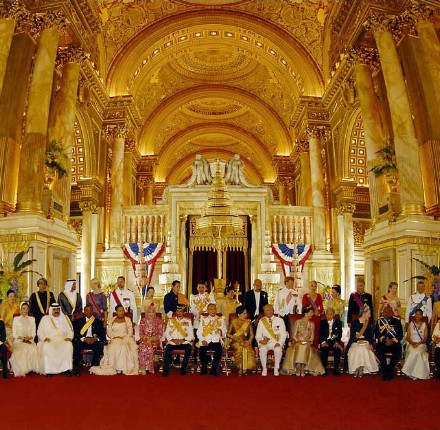
Click here for a photo of most of the world’s reigning monarchs and a number of other royalty, gathered to celebrate the jubilee of the King of Thailand’s accession to the throne.
A few weeks ago, Fr. Rutler informed me that the Queen of Thailand, upon acceding to the throne, made a vow never to perspire. No word on whether she’s kept her vow.
Father & Son
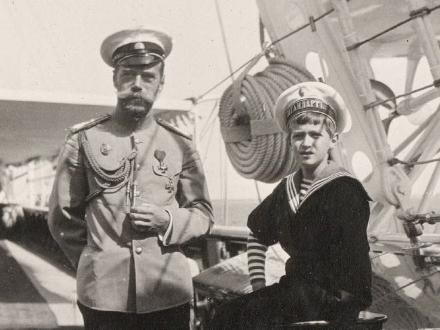
These photos of Czar Nicholas II and his son, the Czarevich Alexei, are from the Romanov family photo album which somehow ended up in the Beinecke Library at Yale University. Nicholas and Alexei, along with their entire family, were murdered by the Communists in the basement of a house in Yekaterinburg, Russia on the night of July 17, 1918. The family having since been canonised (or ‘glorified’, as it’s called in the Russian church) as saints, a cathedral now stands on the site of their murders. (more…)
Tennis, Anyone?
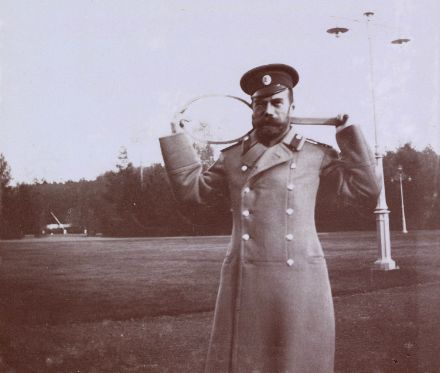
I don’t know how that translates into Russian.
Your Royal Highness, Cead Mile Failte
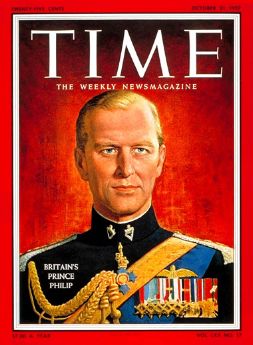
Thus wrote Francis Finnegan of the Ancient Order of Hibernians to H.R.H. Prince Philip, the Duke of Edinburgh, (above, in the uniform of the Queen’s Royal Irish Hussars) inviting him to partake in New York’s St. Patrick’s Day festivities in 1966 during his visit to North America. The invitation was made in recompense for the opprobrious breach of propriety in 1861 when Col. Michael Corcoran, Commanding Officer of the New York 69th committed an act of insubordination when he refused to order his troops to take part in the official festivities welcoming the Prince of Wales to New York. Corcoran was dropped from the Officers Roll of the New York State Militia for the offense, and was to be court-martialled but for the outbreak of the Civil War.
Finnegan, the public relations director of the New York St. Patrick’s Day Parade organised by the Ancient Order of Hibernians every year, assured the Duke of Edinburgh that he would not be mistreated as the Prince of Wales had been one hundred and five years previous. “Alas,” TIME magazine reported, “he arrived in Manhattan too late on St. Patrick’s Day to march in the Fifth Avenue parade, even though he did sport a fine green tie. Britain’s Prince Philip, 44, in a green tie? ‘Just a coincidence,’ chuckled the consort.” (TIME, 25 March, 1966).
The 1861 visit of the Prince of Wales to New York was a spectacular event, despite the insults of Col. Corcoran. A ball was held, just as for the Queen Mother during her 1954 visit to New York, as well as a parade and pass-in-review.
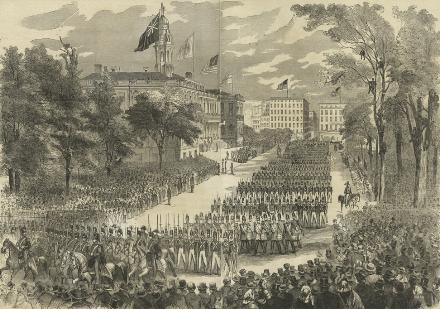
Visit of King Peter
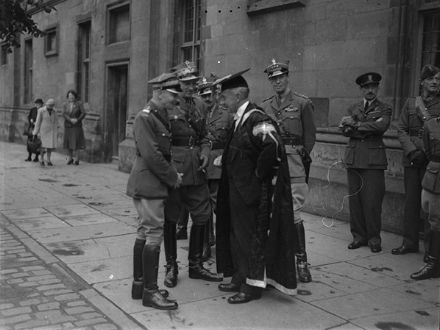
King Peter of Yugoslavia visits the University of St Andrews, September 1941. Above, on South Street outside Parliament Hall and St. Mary’s College gate. Below, in St. Mary’s quad.
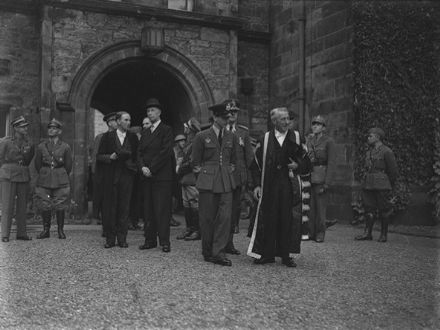
The Two Germanies
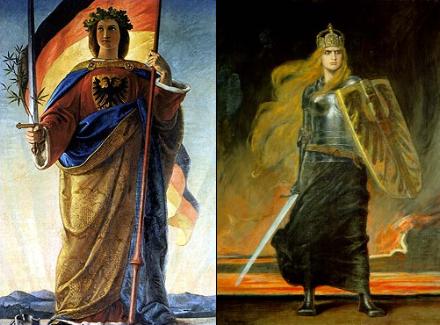
A recent post by Aelianus entitled The Two Germanies brought to mind a little-known idea which surfaced towards the end of World War II. I read in the biography of Empress Zita that a plan was hatched to divide what we now know as Germany, combining Bavaria and Austria to create a Catholic state under the restored Hapsburgs and leaving northern Germany to be a Protestant kingdom with, odd as it might perhaps seem, Lord Louis Mountbatten. Of course it’s not really that odd when one considers that the real name of the Mountbatten family is Battenberg, changed to disguise their Teutonicity during the Great War when the fervor of hatred against our cousin the Hun ran willy-nilly. While Mountbatten was born in Windosr Castle and served as First Sea Lord as well as the final Viceroy of India, he was really entirely German in terms of ancestry. His parents were Prince Louis of Battenberg and Princess Victoria of Hesse and the Rhine, while Louis IV, Grand Duke of Hesse and the Rhine was his grandfather. By right, he was His Serene Highness Prince Louis of Battenberg, but cherishing their adopted country, the family were intimidated into dropping all German styles and titles in 1917.
Lord Mountbatten apparently took the proposal seriously enough that he began to brush up on his German, and informed Empress Zita, living in exile in the Dominion of Canada during the Second World War, of its prospects for both their families. Of course, with Yalta, nothing was ever to come of it and the closest Lord Mountbatten ever came to power, aside from his reign as Viceroy of India, was in 1967 when he was alledgedly asked to lead a coup overthrowing the Labour government. Mountbatten was highly reluctant, and nothing came of the plot. In 1979, while summering at his usual holiday home in the Irish Republic, Mountbatten was killed by an IRA bomb, along with the Dowager Lady Brabourne (aged 82), the Hon. Nicholas Knatchbull (aged 14), and Paul Maxwell (aged 15), a local boy working on the Mountbatten’s boat. He was a Knight of the Garter, a Knight Grand Cross of Bath, Order of Merit, Knight Grand Cross of the Star of India, Knight Grand Cross of the Indian Empire, Knight Grand Cross of the Royal Victorian Order, and the Distinguished Service Order.
The Restitution of Romanian Castles
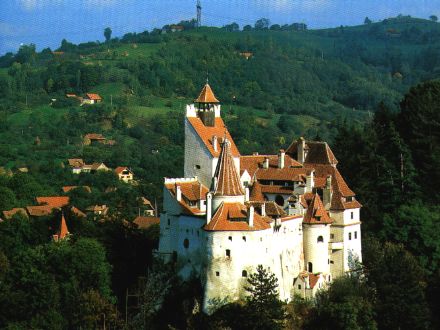
The castle of Bran (above), and the castles of Peles (below), and Pelisor (bottom) are to be restituted by the Romanian government to the Habsburgs and the Hohenzollern-Sigmaringens respectively, and then purchased back by the government for over $60 million, according to Adrian Iorgulescu, the Romanian Minister of Culture. The castles were illegitimately seized by the Communist authorities after they took power in 1947, and after buying them back the government will keep the castles as museums.
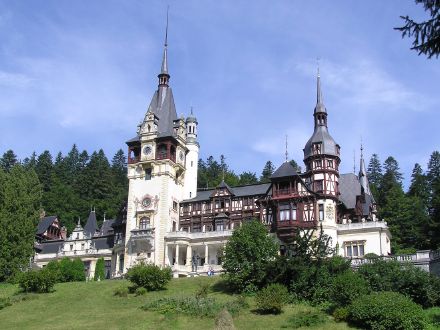
The Habsurgs are the Imperial Family of Austria as well as being the Royal Family of Hungary, Bohemia, Dalmatia, Croatia, Slavonia, Galicia, Lodomeria, Illyria, and Jerusalem, and the Ducal Family of Tuscany, Krakow, Lorraine, Salzburg, Styria, Carinthia, Carniola, the Bukovina, Transylvania, Upper Silesia, Lower Silesia, Modena, Parma, Piacenza, Guastalla, Auschwitz, Zator, Teschen, Friuli, Ragusa, and Zara. The Hohenzollern-Sigmaringen family, on the other hand, are a cadet branch of the senior Swabian branch of the Hohenzollerns, and are the Royal Family of Romania, which has been a republic since the Communist takeover in 1947 and has since, sadly, failed to restore its monarchy. Unlike the more reknowned Hohenzollerns of Brandenburg, the Romanian Royal Family are not Protestant.
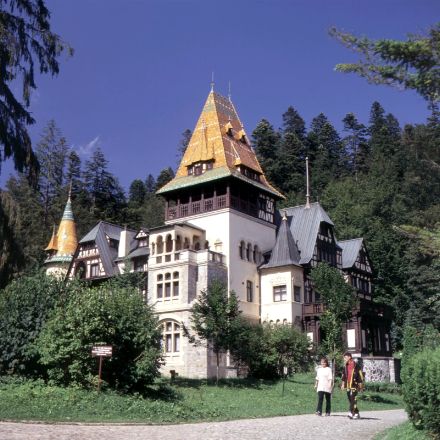
UPDATE: A reader corrects: “The Hohenzollern-Sigmaringens are not the cadet branch, but in fact the surviving senior branch, which position they inherited upon the extinction in the male line of the true senior line, the Hohenzollern-Hechingens, in 1869. Historically they are of minor importance in comparison to their apostate cousins, but still a storied family. Schloss Sigmaringen, by the way, is a magnificent seat, romantically restored in the 19th century. They own it still, but do not tend to live within its forbidding walls. I was shown round it once in dead of winter: an unforgettable experience.”
The Queen Mother in New York, 1954
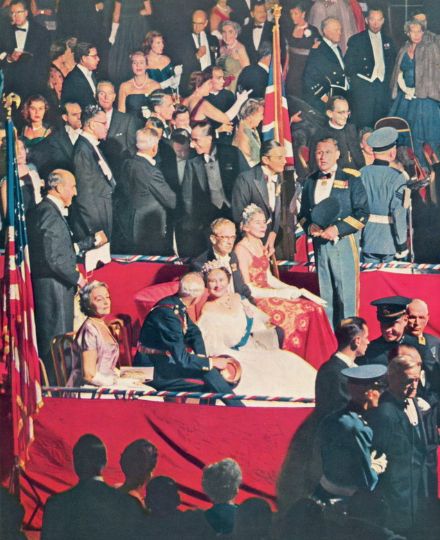
In 1954 Queen Elizabeth, the Queen Mother (n.1900, m.2002) visited New York to accept an educational fund raised by Americans in memory of the late King George VI. On the evening of November 1 of that year, the Seventh Regiment entertained Her Majesty with a special ball held in her honor at the Armory on Park Avenue (view above). Her Majesty also visited the Cathedral of St. John the Divine where she was received by the (Episcopal) Bishop of New York, the Dean, and the clergy of the Cathedral. The three stone blocks on the façade seen in the view below have since been sculpted.
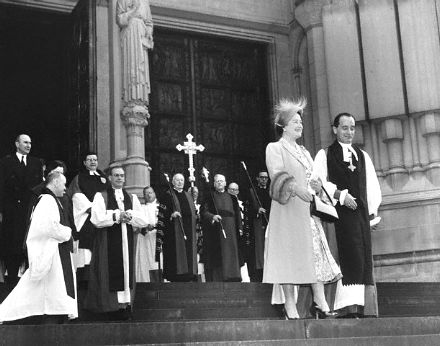
The Last Will and Testament of Louis XVI
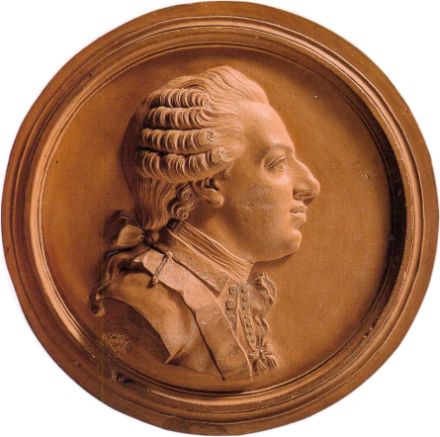
January 21 marked the anniversary of the regicide of Louis XVI, King of France, by the revolutionary authorities.
Here is his last will and testament, written a month previous on Christmas Day.
In the name of the Very holy Trinity, Father, Son and Holy Ghost.
To-day, the 25th day of December, 1792, I, Louis XVI King of France, being for more than four months imprisoned with my family in the tower of the Temple at Paris, by those who were my subjects, and deprived of all communication whatsoever, even with my family, since the eleventh instant; moreover, involved in a trial the end of which it is impossible to foresee, on account of the passions of men, and for which one can find neither pretext nor means in any existing law, and having no other witnesses, for my thoughts than God to whom I can address myself, I hereby declare, in His presence, my last wishes and feelings.
I leave my soul to God, my creator; I pray Him to receive it in His mercy, not to judge it according to its merits but according to those of Our Lord Jesus Christ who has offered Himself as a sacrifice to God His Father for us other men, no matter how hardened, and for me first.
I die in communion with our Holy Mother, the Catholic, Apostolic, Roman Church, which holds authority by an uninterrupted succession, from St. Peter, to whom Jesus Christ entrusted it; I believe firmly and I confess all that is contained in the creed and the commandments of God and the Church, the sacraments and the mysteries, those which the Catholic Church teaches and has always taught. I never pretend to set myself up as a judge of the various way of expounding the dogma which rend the church of Jesus Christ, but I agree and will always agree, if God grant me life the decisions which the ecclesiastical superiors of the Holy Catholic Church give and will always give, in conformity with the disciplines which the Church has followed since Jesus Christ.
I pity with all my heart our brothers who may be in error but I do not claim to judge them, and I do not love them less in Christ, as our Christian charity teaches us, and I pray to God to pardon all my sins. I have sought scrupulously to know them, to detest them and to humiliate myself in His presence. Not being able to obtain the ministration of a Catholic priest, I pray God to receive the confession which I feel in having put my name (although this was against my will) to acts which might be contrary to the discipline and the belief of the Catholic church, to which I have always remained sincerely attached. I pray God to receive my firm resolution, if He grants me life, to have the ministrations of a Catholic priest, as soon as I can, in order to confess my sins and to receive the sacrament of penance.
I beg all those whom I might have offended inadvertently (for I do not recall having knowingly offended any one), or those whom I may have given bad examples or scandals, to pardon the evil which they believe I could have done them.
I beseech those who have the kindness to join their prayers to mine, to obtain pardon from God for my sins.
I pardon with all my heart those who made themselves my enemies, without my have given them any cause, and I pray God to pardon them, as well as those who, through false or misunderstood zeal, did me much harm.
I commend to God my wife and my children, my sister, my aunts, my brothers, and all those who are attached to me by ties of blood or by whatever other means. I pray God particularly to cast eyes of compassion upon my wife, my children, and my sister, who suffered with me for so long a time, to sustain them with His mercy if they shall lose me, and as long as they remain in his mortal world.
I commend my children to my wife; I have never doubted her maternal tenderness for them. I enjoin her above all to make them good Christians and honest individuals; to make them view the grandeurs of this world (if they are condemned to experience them) as very dangerous and transient goods, and turn their attention towards the one solid and enduring glory, eternity. I beseech my sister to kindly continue her tenderness for my children and to take the place of a mother, should they have the misfortune of losing theirs.
I beg my wife to forgive all the pain which she suffered for me, and the sorrows which I may have caused her in the course of our union; and she may feel sure that I hold nothing against her, if she has anything with which to reproach herself.
I most warmly enjoin my children that, after what they owe to God, which should come first, they should remain forever united among themselves, submissive and obedient to their mother, and grateful for all the care and trouble which she has taken with them, as well as in memory of me. I beg them to regard my sister as their second mother.
I exhort my son, should he have the misfortune of becoming king, to remember he owes himself wholly to the happiness of his fellow citizens; that he should forget all hates and all grudges, particularly those connected with the misfortunes and sorrows which I am experiencing; that he can make the people happy only by ruling according to laws: but at the same time to remember that a king cannot make himself respected and do the good that is in his heart unless he has the necessary authority, and that otherwise, being tangled up in his activities and not inspiring respect, he is more harmful than useful.
I exhort my son to care for all the persons who are attached to me, as much as his circumstances will allow, to remember that it is a sacred debt which I have contracted towards the children and relatives of those who have perished for me and also those who are wretched for my sake. I know that there are many persons, among those who were near me, who did not conduct themselves towards me as they should have and who have even shown ingratitude, but I pardon them (often in moments of trouble and turmoil one is not master of oneself), and I beg my son that, if he finds an occasion, he should think only of their misfortunes.
I should have wanted here to show my gratitude to those who have given me a true and disinterested affection; if, on the one hand, I was keenly hurt by the ingratitude and disloyalty of those to whom I have always shown kindness, as well as to their relatives and friends, on the other hand I have had the consolation of seeing the affection and voluntary interest which many persons have shown me. I beg them to receive my thanks.
In the situation in which matters still are, I fear to compromise them if I should speak more explicitly, but I especially enjoin my son to seek occasion to recognize them.
I should, nevertheless, consider it a calumny on the nation if I did not openly recommend to my son MM. De Chamilly and Hue, whose genuine attachment for me led them to imprison themselves with me in this sad abode. I also recommend Clery, for whose attentiveness I have nothing but praise ever since he has been with me. Since it is he who has remained with me until the end, I beg the gentlemen of the commune to hand over to him my clothes, my books, my watch, my purse, and all other small effects which have been deposited with the council of the commune.
I pardon again very readily those who guard me, the ill treatment and the vexations which they thought it necessary to impose upon me. I found a few sensitive and compassionate souls among them – may they in their hearts enjoy the tranquillity which their way of thinking gives them.
I beg MM. De Malesherbes, Tronchet and De Seze to receive all my thanks and the expressions of my feelings for all the cares and troubles they took for me.
I finish by declaring before God, and ready to appear before Him, that I do not reproach myself with any of the crimes with which I am charged.
Made in duplicate in the Tower of the Temple, the 25th of December 1792.
LOUIS
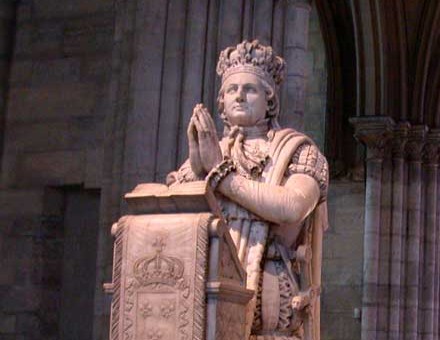
Bill and Ted
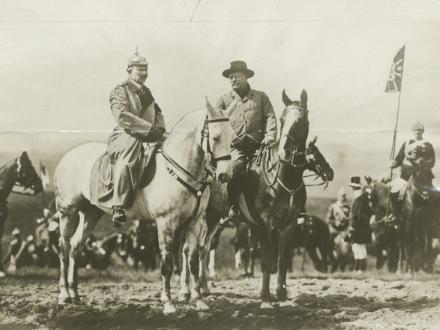
His Imperial Majesty Wilhelm II, the German Emperor, and His Excellency Mr. Theodore Roosevelt, President of the United States of America.
A Tower of Tradition in Suffolk
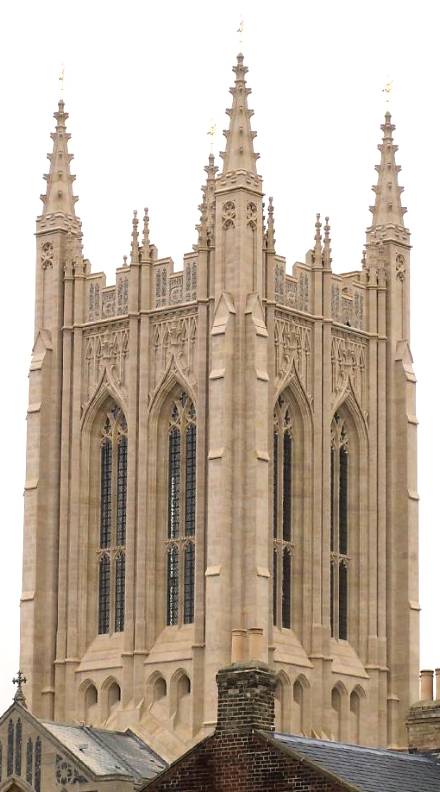
THE LAST UNFINISHED cathedral in the Church of England was finally finished this year with the completion of the crossing tower of St. Edmundsbury Cathedral. The tower was not only designed in the Suffolk perpindicular style but also constructed using traditional techniques. The brick and masonry spire is held together by lime mortar, without an inch of steel or concrete.
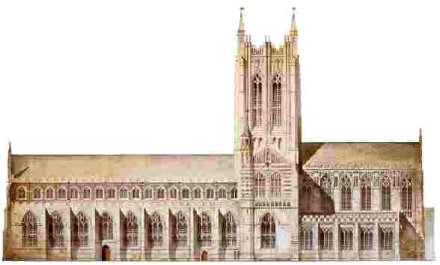
The Cathedral is built on the grounds which still contain the ruins of the great abbey of Bury St Edmunds. The site of the current cathedral has held a church since 1065, completely rebuilt on three or four occasions. The current chancel dated from 1865, while the nave was begun centuries before in 1503. (more…)
What To Do When You Find a Hohenzollern in Your Study

The man of letters, of course, needs a place in which to withdraw from his various dalliances in the social realm and to concentrate on the dominion of learning; a private place in which to enjoy a book, broadsheet or other periodical, or perhaps to brood in a comfortable chair with a dram of scotch and some sound music. The ladyfolk, needless to say, have no place in such a bailiwick, not even to clean, for the wise gentleman knows that a study which accumulates in dust likewise accumulates in a certain intangible value. After all, what man of letters does not relish in removing his 1928 Burns and Oates edition of Martyrs of the Upper Volta from the shelves, blowing the dust from the cover, and charging inwards to read of some blessed soul who met his end in a steamy cauldron?
What then could throw arcadian bliss into disarray quite as much as the sudden appearance of Kaiser Wilhelm? A Hapsburg? You may as well have invited! A Bourbon? Well, fair enough, they have been known to lose their heads. But a Hohenzollern? You’ve got your work cut out for you.
Once considered the seminal work on dealing with Spontaneous Hohenzollern Appearances (or ‘SHA’), Dr. Leo von Fulbreck’s Treatise on the Treatment of Hohenzollernitosicity (to use the old, politically-incorrect term for SHA), has since been discredited, perhaps unjustly due to the Sparticist leanings of the Thuringian professor. The 1919 U.S. War Department guide War Department Field Guide 24-R: Recommended Courses of Action in Event of Hohenzollern Situation (and its appendix 24-R(II) dealing with the Hohenzollern-Sigmaringen branch) perpetuated the essence of von Fulbreck’s theories shorn of their ideological slant. The Second-World-War-era Your Enemy: the Sudden Hun-henzollern released by the British Department of Information, however, is generally considered unreliable. Combing through all this mess, I have endeavoured to deliver as part of my contribution to learning the most well-researched, as well as concise, recommended course of action regarding the spontaneous appearence of Hohenzollerns in one’s study:
1. Give the man a stern, intense, but unprovocative stare (as exemplified in above illustration) and he will eventually be moved to tears, mourning the loss of Tanganyika.
2. Simultaneously ring the bell (or, if one’s home is electrically-equipped, press the buzzer) and ask one of your staff to contact the Doorn Home for the Dethroned and Bewildered to inform them that one of their patients is on the loose.
3. Offer a stiff drink and wait for the men from the Doorn Home to arrive.
With any luck that should suffice, and unfortunate mishaps will hopefully be avoided.
Mary Queen of Scots’ Tree
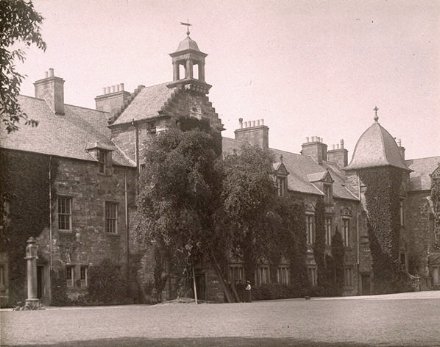
Pursuant to conversations held yesterday afternoon, I give you the thorn tree in the quad of St. Mary’s College, University of St Andrews, planted by Mary Queen of Scots. This photo was taken in the 1930’s, I believe. It looks a little worse for wear these days; rather sickly actually. Wouldn’t be surprised if the University was trying to kill it off as a safety hazard or other such bureaucratic flopdoodle.
Happy Dominion Day!
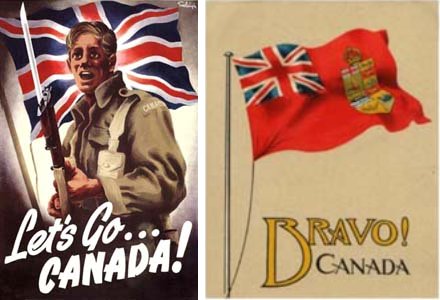
A day late, I hope all our Canadian friends and neighbours have enjoyed a happy and blessed Dominion Day. In tribute to the Great White North, I present our dear readers with that wonderful song, the anthem of anglophone Canada – thistle, shamrock, rose entwined – the Maple Leaf Forever. It is one of my favorite tunes, and were I governor of this fair land, after making coattails and top hats de rigeur for gubernatorial events, I think I’d steal the notes and make a new song called Empire State Forever.
So all that remains is to say long live Canada and God Save the Queen!
[Click here for MP3 audio file]
In Days of yore, from Britain’s shore,
Wolfe, the dauntless hero came,
And planted firm Britannia’s flag,
On Canada’s fair domain.
Here may it wave, our boast, our pride,
And joined in love together,
The thistle, shamrock, rose entwined,
The Maple Leaf forever!
The Maple Leaf, our emblem dear,
The Maple Leaf forever!
God save our Queen, and Heaven bless,
The Maple Leaf forever!
At Queenston Heights and Lundy’s Lane,
Our brave fathers, side by side,
For freedom, homes, and loved ones dear,
Firmly stood and nobly died;
And those dear rights which they maintained,
We swear to yield them never!
Our watchword evermore shall be,
The Maple Leaf forever!
The Maple Leaf, our emblem dear,
The Maple Leaf forever!
God save our Queen, and Heaven bless,
The Maple Leaf forever!
Our fair Dominion now extends
From Cape Race to Nootka Sound;
May peace forever be our lot,
And plenteous store abound:
And may those ties of love be ours
Which discord cannot sever,
And flourish green o’er freedom’s home
The Maple Leaf forever!
The Maple Leaf, our emblem dear,
The Maple Leaf forever!
God save our Queen, and Heaven bless,
The Maple Leaf forever!
On merry England’s far-famed land,
May kind Heaven sweetly smile;
God bless Old Scotland evermore,
And Ireland’s Emer’ld Isle!
Then swell the song, both loud and long,
Till rocks and forest quiver,
God save our Queen, and Heaven bless
The Maple Leaf forever!
The Maple Leaf, our emblem dear,
The Maple Leaf forever!
God save our Queen, and Heaven bless,
The Maple Leaf forever!
Greenwich Hospital
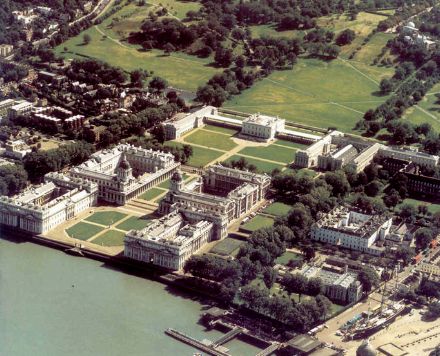
One of my favorite campuses (campii?) in the world is the Royal Hospital at Greenwhich. The site was originally home to the Palace of Placentia, a royal palace built by Humphrey, Duke of Gloucester in 1428. Placentia was the primary royal residence for two centuries up unto the Civil War, after which it fell into ruin. In 1694, the Royal Naval Hospital for Seamen was established as a home for old sailors, and grandiose architecture was required to show the monarchic splendor of a royal foundation. (more…)
Warner on the Gotha
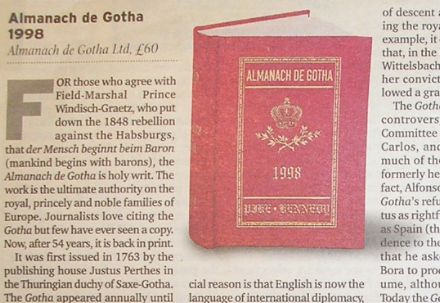
Whilst rummaging through my room at home in New York last week, I came across this article which I had cut out of the ill-fated European in 1998 written by none other than Mr. Gerald Warner, KM. I was fourteen years old in 1998 and the European folded about a year later. Click here to read in jpg form. (A large file, some browsers may require resizing to view the text at a readable size).
The Remarkable Hapsburgs

Last night, Fr. Emerson popped up from Edinburgh and gave a talk on the Hapsburg dynasty. It was tremendously interesting. I learned so much I hadn’t known before and it opened up a terrific number of avenues of information down which I have only begun to stroll.
I had no idea how remarkable a man Franz Ferdinand was. All they teach you in America is “This is the guy who got shot” instead of “This man would have been the savior of all that is good and holy in Europe.”
I have seen and read a lot of what Europe is today; Fr. Emerson gave us a glimpse of what Europe was yesterday, before the utter destruction of the social order of the continent by that moment in Sarajevo and everything that came after it. Knowing what Europe was, how depressing to see it now!
It also filled me with some optimism, oddly enough. I used to be partly in the school of thought that’s convinced that Europe is lost. If this is how Europe was, surely it could be again? Perhaps, perhaps not. (more…)
Next Wednesday
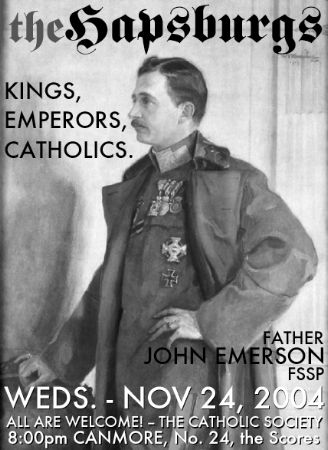
Fr. Emerson will be returning to to Canmore next week to give a talk on the Hapsburgs.
Search
Instagram: @andcusack
Click here for my Instagram photos.Most Recent Posts
- Christ Church December 29, 2024
- A Christmas Gift from the Governor December 24, 2024
- Oude Kerk, Amsterdam December 24, 2024
- Gellner’s Prague December 19, 2024
- Monsieur Bayrou December 18, 2024
Most Recent Comments
Book Wishlist
Monthly Archives
Categories

